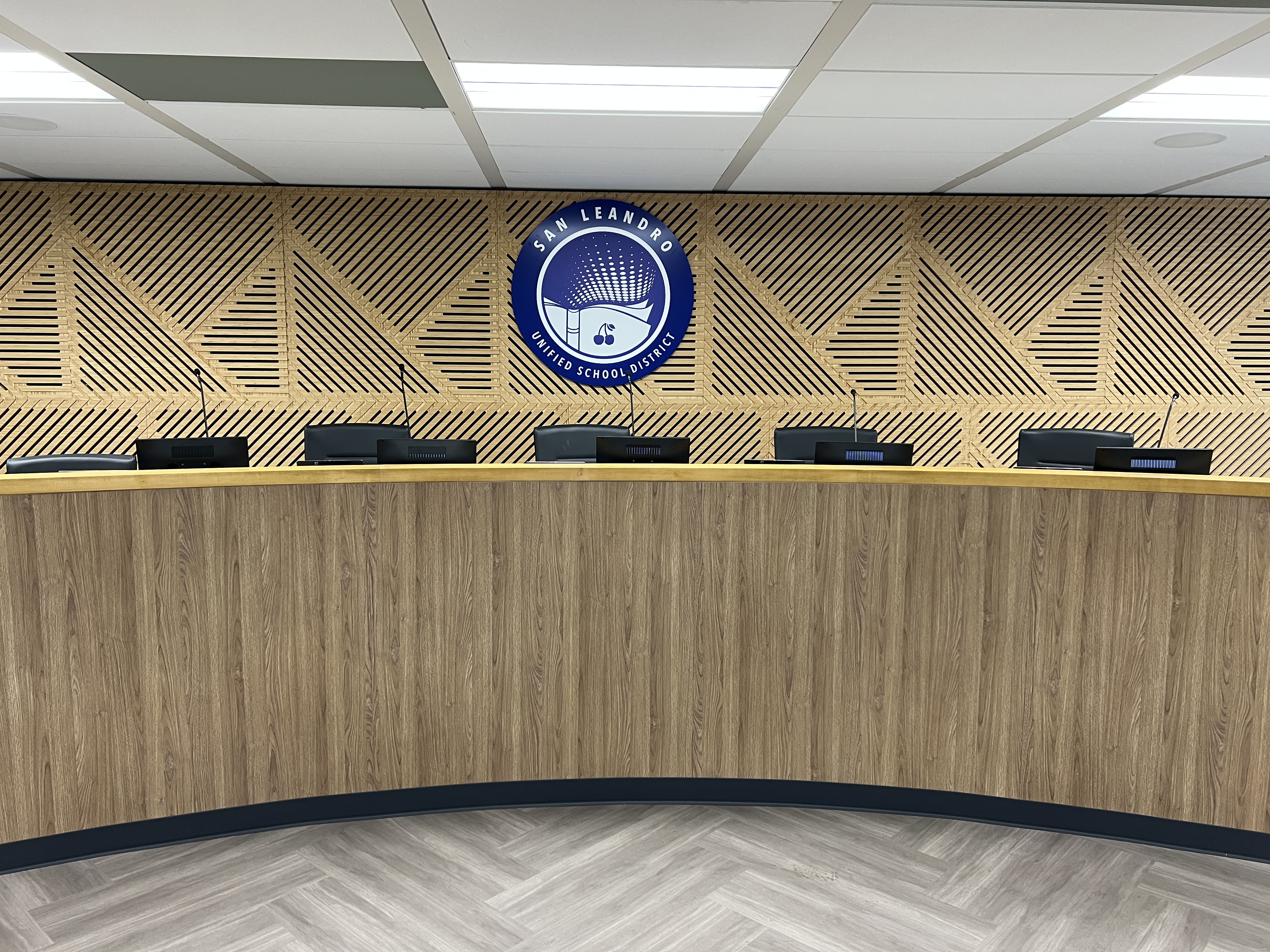Program Description and Goals for English Learners
SLUSD provides various instructional program options tailored to meet the diverse needs of English learners across our schools. All program options guarantee access to a full, comprehensive curriculum with scaffolds and support for students at different English language proficiency levels. Each EL program supports our EL students in graduating from SLUSD ready for college and careers, fully meeting the goals of the Graduate Profile.
Structured English Immersion (SEI)
- Core instruction in English language arts, math, science, and social science is taught in English via Integrated ELD.
- Primary language support in the content areas can be provided by the teacher, bilingual paraeducator, or digital program support whenever possible.
- All ELs receive designated ELD instruction during a protected time.
- All students participate in activities that lead to cultural proficiency and promote a positive self-image.
- Classroom composition is structured to strengthen opportunities for cultural and linguistic integration.
Dual Language Immersion Programs (DLI)
The DLI program aims to produce bilingualism and biliteracy, grade-level academic achievement, and positive cross-cultural competencies for ELs and English-dominant students. Instruction is delivered in both English and the target language.
- Core instruction is provided to all students in both languages with purposeful and strategic use of both languages throughout the day.
- Students receive daily Integrated ELD instruction across content areas as appropriate.
- Differentiated instruction in all content areas using instructional strategies for language learners of each language.
- All ELs in grades K-5 shall receive a minimum of 30 minutes of daily Designated ELD instruction during a protected time.
- All students participate in activities that lead to cultural competency and promote a positive self-image.
Spanish Biliteracy Program
The Spanish Biliteracy program is designed with the goal to ensure English learners who are native speakers of Spanish achieve grade-level academic competency and develop high levels of English and home language proficiency and literacy. The district currently operates a Developmental Spanish Bilingual Program that designates the language of instruction for each content area by grade level.
Only available at Jefferson and Halkin Elementary schools.
Who can enroll?
All English Learners are enrolled in SEI. Newcomer pathway is an optional program with separate entrance and exit requirements.
Who can enroll?
English Learners of the target language and students who wish to learn a second language starting at Kindergarten.
Who can enroll?
This program is designed for potential English Learners who are native speakers of Spanish in K-5th grade.
Key Terms
When a parent or legal guardian enrolls their child in a California public school for the first time, they must complete a Home Language Survey (HLS) to determine the languages spoken at home by the student and family. This survey is completed online as part of the district’s centralized enrollment procedure.
If information is inaccurate on the HLS, the parent or guardian may request to change it only if the child has not already been assessed. The parent or guardian must contact the school site to complete a new HLS.
The information provided on the original HLS takes precedence over any subsequent HLS that may be completed after a student has been assessed or identified as an English learner.
The HLS consists of the following four questions:
- What language did this student learn when he or she first began to speak?
- What language do you use most frequently to speak to this student?
- What language does this student most frequently use at home?
- What is the language most often spoken by the adults at home?
If the answers to all four questions on the HLS are “English,” the child is identified as English Only and will not be assessed for English language proficiency. If the answers to any of the first three questions on the HLS indicate a language other than English, the district notifies the family that the child will be assessed using the Initial English Language Proficiency Assessments for California (IELPAC). The results of this assessment determine whether or not the student qualifies for placement in an EL program and requires EL services.
The English Language Proficiency Assessments for California (ELPAC) is the mandated state test for determining English language proficiency (ELP). It is administered as an initial assessment to newly enrolled students whose primary language is not English, as indicated on a home language survey; and, annually, as a summative assessment to students who have been previously identified as EL students.
The general and Alternate ELPAC are aligned with the 2012 California English Language Development Standards (2012 ELD Standards) (PDF) ![]() . The Alternate ELPAC is aligned through the English Language Development Connectors (ELD Connectors) (DOCX)
. The Alternate ELPAC is aligned through the English Language Development Connectors (ELD Connectors) (DOCX) ![]() .
.
The general and Alternate ELPAC are delivered via a computer-based test delivery platform. The general ELPAC has four domains (Listening, Speaking, Reading, and Writing) which are administered on computer except for the Writing domain for kindergarten through grade two, which will remain as a paper-based test. The Alternate ELPAC has two communication modes: expressive (Speaking and Writing) and receptive (Listening and Reading).
Types of ELPAC Assessments
-
Initial ELPAC—The general assessment whose results provide the primary identification of students as English learners (ELs)
-
Summative ELPAC—The general assessment, administered annually, whose results measure an EL student’s progress and identify the student’s ELP level
-
Initial Alternate ELPAC—The alternate assessment whose results provide the primary identification of students with the most significant cognitive disabilities as ELs
-
Summative Alternate ELPAC—The alternate assessment, administered annually, whose results measure and identify the student’s ELP level, for students with the most significant cognitive disabilities
The purpose of the reclassification process is to document when an English learner has demonstrated sufficient proficiency in developing English. Students are considered for reclassification from EL to Redesignated Fluent English Proficient (RFEP) at the point when specialized language and academic support services are deemed no longer necessary for ELs to be successful at a level commensurate to non-ELs. Reclassified students have the opportunity to earn the Seal of Biliteracy upon graduation.
English Learner Reclassification Criteria
Criteria 1: Summative ELPAC Overall Score of 4
Criteria 2: Teacher Evaluation (Recommendation form on Ellevation)
Criteria 3: Parent/Guardian Consultation
Criteria 4:
For 1st Grade only:
STAR Early Literacy score in the 40th percentile or higher from the previous spring or current year.
For 2nd – 5th Grade:
STAR ELA Reading score in the 40th percentile or higher from the previous spring or current year.
OR
California Assessment of Student Performance and Progress (CAASPP) ELA score of 3 or 4 (Meeting Standard) from the previous spring.
Criteria 1: Summative ELPAC Overall Score of 4
Criteria 2: Teacher Evaluation (Recommendation form on Ellevation)
Criteria 3: Parent/Guardian Consultation
Criteria 4: STAR ELA Reading score in the 30th percentile or higher from the previous spring or current year.
OR
California Assessment of Student Performance and Progress (CAASPP) ELA score of 3 or 4 (Meeting Standard) from the previous spring.
See this helpful video from some of our parents of reclassified students on how to prepare for the ELPAC!



